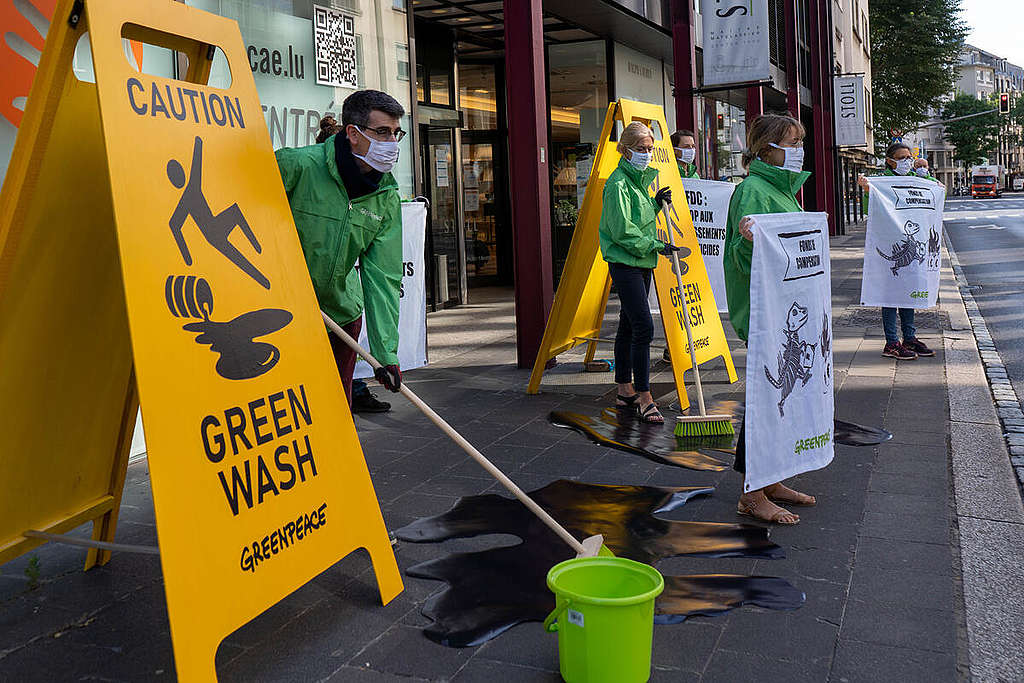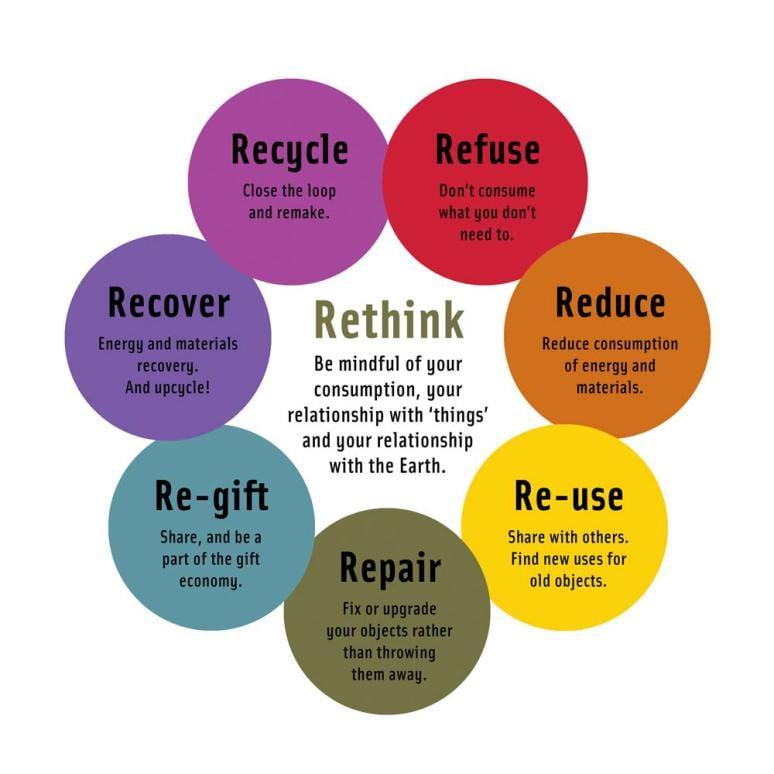COVID has underlined the deep mutual connection and reliance we have with the natural world. It is also showing that our current socio-economic systems — driven by hectic lifestyles, mindless consumption and putting a price-tag on nature — doesn’t work. It clarifies that linking relentless and voracious economic growth with our personal well-being makes no sense. But what else do we have to work with?
Well, people are looking to the Circular Economy for the answers to the outdated neo-liberal system that we have now. For years, it has been promoted as the magical lever which solves the planet’s environmental problems. Big and small corporate brands across the world claim this model is the solution to climate change, loss of biodiversity… you name it…. Why? Because pulling this lever should increase environmental sustainability while spurring economic growth by using our precious resources more efficiently.

…which would be amazing if it were possible! No more sleepless nights worrying about our survival on this planet. No more anxiety about the idea of having to move your family to Mars. Plus, personally, I’d stop losing friends by saying, “we can’t keep consuming as if there’s endless resources.”
Nope, unfortunately, the circular economy alone is not going to save us all.
Let’s take a step back.
What is the Circular Economy?
A circular economy is an economic system aimed at minimising waste and making the most of resources. In a circular system, resources, waste, emissions, and energy leakage are lowered by reducing consumption and production. It’s about long-lasting design, maintenance, repair, reuse, remanufacturing, refurbishing, and eventually, recycling. This approach is in contrast to what we have now, which is a ‘take, make, dispose’ model of production. So far so good!
Yet, like anything, corporations only pick out the parts which suit them. That is, by focusing on closing the circle, with an emphasis on recycling.
Basically, corporations are putting all the responsibility on us. If the planet is getting dirtier, it’s not their fault, it’s ours. Because we’re all not recycling enough. They are also betting against the odds that a technological fix will bail us out of the perpetually polluting and deadly path we’re now on. They deliberately forget the other part of the equation: slowing the consumption and production of materials, resources and energy all together and implementing long-term waste prevention solutions which would design out the waste altogether.
It is more profitable for them to tell us that technology will fix it all, so we can continue business as usual, rather than tackling the root cause of the problem: consumerism and overconsumption.
You may say, “Well, something is better than nothing.”
Well, yes, but the circular economy can backfire
Recycling is far from 100% efficient and many resources, like energy, simply can’t be recycled. Relying solely on recycling can create an efficiency paradox; leading us to an increase in product demand, and thus, making more stuff and extracting more resources to make that stuff. In other words, recycling alone is a grand distraction from the real solution: preventing pollution at the source.

Even if all resources and materials were recycled and the recycling process was 100% efficient, the amount of used resources and material that can be recycled will always be smaller than the stuff needed for growth. To make up the difference we end up having to drill, burn and bulldoze our way through nature.
Where to start, then?
Let’s start by adding “slow” to the term “circular economy”, because language matters.
For our economy to be restorative and generative, not just cycling more and more resources around faster and faster, we need to both: slow the flow and close the loop by reducing production and consumption. This means reversing the waste hierarchy and putting “refuse” (as in, “don’t want it”) and “reduce” at the top of the list. This allows us to tackle consumerism, overconsumption and overproduction head-on while questioning the notion of growth altogether.

Yes.. this means consuming less and…
… rolling-out mindful and ecological designs that enable sustainable ecosystems for all of us.
It should look like this:
- SIMPLE – It should be created with tools that are easy to understand and repair
- INPUT-ORIENTED – Production must understand the value of all resources and how to conserve and use resources effectively, with a minimum of waste.
- WITH PURPOSE – Products must be designed for longevity, promoting extended use to reduce buying more of the same stuff. They must be durable as well as repairable, reusable, refurbishable, recyclable. The end of life of the product and its disposal must be factored into this design phase as well as the material mix.
- FOR MULTI USE- Reverse-engineering and modularity are key to enable repair and different uses of the product.
- DESIGN GLOBAL, MANUFACTURE LOCAL — Combining globally shared productive knowledge, with distributed manufacturing closer to the place of use and demand.
… emphasize genuine sustainability to prevent and reduce environmental impact across the entire life-cycle of products to protect our planet, and:
- PREVENT and minimise the impact of parts and materials.
- Source your parts and materials LOCALLY.
- Use efficient and RENEWABLE ENERGY.
- Eliminate all TOXIC chemicals and pollution.
- Avoid WASTE and make the by-products of today’s resources for tomorrow.
… open source information and standards to enable to repair and foster innovation, which is:
- FREE – Information freely available for anyone to access.
- EDITABLE – in formats that allow people to remix, add, build upon, learn and improve.
- OPEN – share under open licenses to enable legal decentralised collaboration and enable the right to fix and the access to repair tutorials or spare parts.
So, Is this slow circular economy already happening??
Yes! Some concrete steps that are already changing the landscape of the economy and our cultural attitudes are tax incentives for repair, setting limits on advertising, mandatory take-back schemes or Extended Producer Responsibility regulations. Eliminating the use of hazardous chemicals, reducing resource use, such as energy, water and raw materials, as well as carrying out better working practices (wages, standards, health, working hours etc.) for manufacturers and in farming and mining. To improve production, people are slowing it down and making it more resilient. New, alternative business models (eg. sharing, renting, cooperative, non-hierarchical, slower fashion cycles) are also a common feature of businesses and organisations and facilitate a slow circular economy

A truly slow circular economy will require all the above as well as strong transparency, accountability, collaboration and localisation across value chains, industries and movements. Eventually, all the above will lead to an economy that is built on a foundation of shared ownership designed to generate value for those that create it while delivering fair and just outcomes which preserves resources and ecosystems while benefiting the many rather than the few.
Moreover, a truly slow circular economy would mean that the circular culture is also reflected in our social systems, including our financial services, our business structures, and the political frameworks and cultural norms. This is a way to fund circular economies in their truest sense – not just circling materials that keep us growing and maximising profit, but by also making circular the value flows that could help fund the positive social and environmental change we need to make, creating a circular economy of wealth in service of the common good.
As the pandemic forces us to slow down our routines and lifestyles, let’s also reimagine how to slow down our consumption patterns and adapt our production models. This crisis has given us the opportunity to rethink and reinvent our future and the systems that underpin our economy. Let’s not let this crisis go to waste!
Paula Tejón Carbajal is a Global Campaign Strategist for Greenpeace International.



